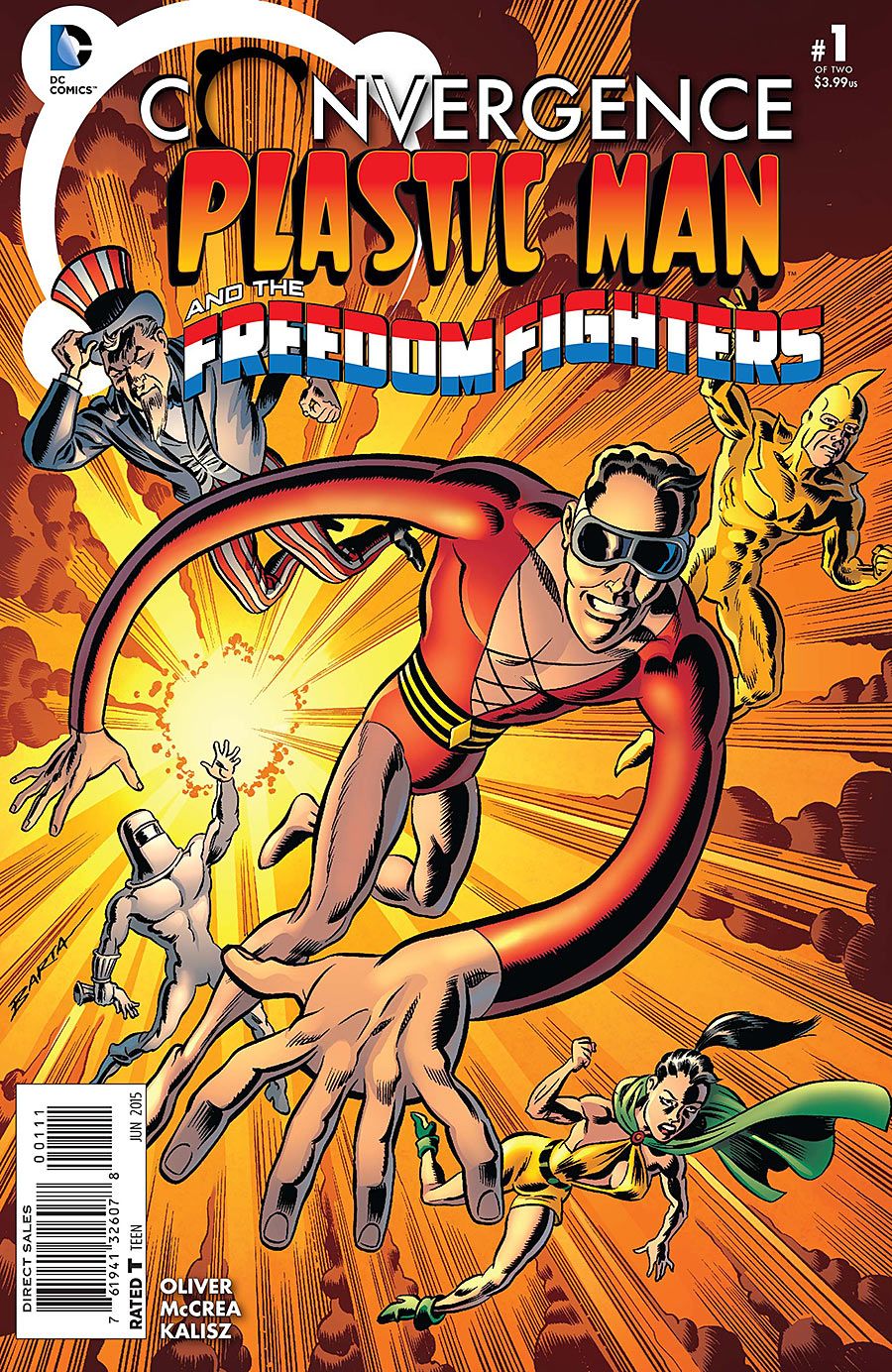"Convergence: Plastic Man and the Freedom Fighters" by Simon Oliver and John McCrea has a "What If?"-like hook for its premise: New York is taken over by Nazis while the city is under the Dome and Plastic Man and his pals lose their superpowers.
Unfortunately, a lot of the inherent interest of this idea is flattened because of Oliver's dull approach to the exposition. Plastic Man's life before the Dome and the whole year under it are told in first-person flashback. Both the action and dialogue are weighed down by lots of information dumps and Plastic-Man's first person narration through textboxes. Even more so than other "Convergence" titles with heavy exposition burdens, "Convergence: Plastic Man and the Free Fighters" #1 relies on telling instead of showing. The result is a lack of excitement and narrative suspense, despite how Plastic Man has more to deal with than heroes in other Domes.
The Nazis are part of the narrative sluggishness, unfortunately. The Nazi Commandant in charge of the city is depicted as grossly overweight, licentious and sexually "deviant." The commandant's weight, his drinking and some BDSM paraphernalia are used as visual shorthand for supposed ethical shortcomings. The Nazis attempted genocide. It is unnecessary, not to mention unintentionally ironic, to reinforce past and current prejudices in order to beat the reader over the head about why a Nazi as a bad person. There is nothing to subvert. This is not like in Garth Ennis' "Preacher," where saints and angels were torn down with similar visual shorthand. The swastika needs no support as a symbol. On top of this, the dialogue is hackneyed. The commandant actually says "so we meet again, Mister O'Brian...you should have killed me when you had the chance." If this was meant to be funny, it doesn't succeed and sacrifices credibility in the process. It is impossible to take the Nazis seriously in these scenes. When the villains feel like cardboard jokes, the whole story is weakened.
The Nazis are thinly drawn, but the other heroes fare even worse with characterization. It's not clear why the Freedom Fighters were even included, except for historical interest. They get almost no dialogue, and their presence adds visual clutter without contributing any personality or heightened stakes.
Oliver also leaves too little to do for McCrea. The art functions more like illustrations for all the text instead of as a more equal and active storytelling partner. It's too bad, because Nazi officer designs depictions aside, McCrea's art is strong on several levels. His backgrounds are rich with detail. He runs with the Nazi New York idea and it's fun and creepy to see the Manhattan skyline and Times Square marred by Nazi imagery. His visual texture is excellent and the panel where the Freedom Fighters are on a rooftop stands out for the use of zip-a-tone, architectural details and dramatic silhouettes. John Kalisz's colors are uneven, though. On some of the city scenes, he pays great attention to preserving McCrea's sense of space and details but, on other pages, there are too many simplistic neon-lit monotones.
The team's battle rival isn't announced until the last page. The choice of opponent is out of left field, but that isn't enough of a hook. "Convergence: Plastic Man and the Freedom Fighters" #1 fails in execution because its passive narrative and lack of characterization undermine investment in the plot and premise.

